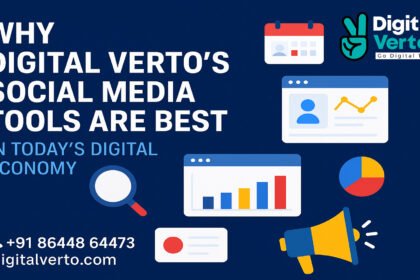In today’s fast-moving digital world, grabbing and holding attention is harder than ever. Audiences scroll through content quickly, and traditional formats like long text or static images often get ignored. This is where video content steps in—and it’s changing the game.
Whether it’s short clips on TikTok, product reviews on YouTube, or tutorials on Instagram Reels, video marketing is becoming one of the most powerful tools for brands. But why is this shift happening? Why is video content becoming the dominant force in digital marketing?
Let’s explore the reasons behind this transformation and what it means for your marketing strategy.
The Rise of Video Content: A Digital Marketing Revolution
Over the past few years, the popularity of video content has exploded. From personal vlogs to professional brand campaigns, videos are everywhere. A few key stats help explain this surge:
-
People watch over 1 billion hours of video on YouTube each day.
-
Videos on social media generate 1200% more shares than text and image content combined.
-
88% of marketers say that video marketing provides a good return on investment (ROI).
This growth is not just a trend—it’s a shift in how people consume information. Users prefer quick, visual, and engaging formats. That’s why the importance of video content is growing rapidly in every industry.
How Video Engages Audiences More Effectively Than Other Formats
One of the main reasons video marketing strategy is so successful is its ability to engage viewers emotionally and visually. Unlike text, videos combine sound, visuals, motion, and storytelling, making it easier for people to connect.
Here’s why video works better:
-
Easier to understand complex ideas in a short time.
-
More memorable – people remember 95% of a message when they watch it in a video versus 10% when reading it in text.
-
Emotionally powerful – music, tone, and visuals help create feelings that build brand connection.
People don’t just watch videos—they feel them. This emotional connection makes video content ideal for product demos, testimonials, behind-the-scenes peeks, and brand storytelling.
The Role of Social Media in Amplifying Video Marketing
Social media platforms are the fuel behind the success of video marketing. Channels like Instagram, Facebook, YouTube, TikTok, and LinkedIn are prioritizing video content in their algorithms.
Why? Because videos boost user engagement, keep people on the platform longer, and encourage more shares and comments.
Here’s how each platform supports video marketing:
-
TikTok: Short, creative, viral content. Great for reaching Gen Z.
-
Instagram Reels & Stories: Quick product highlights and behind-the-scenes content.
-
YouTube: Long-form tutorials, how-tos, product reviews, vlogs.
-
Facebook: Live videos, event promotions, and community storytelling.
-
LinkedIn: Business-focused interviews, explainers, and case studies.
If you’re not already using videos in your social media video marketing strategy, you’re missing a powerful opportunity to connect with your audience.
The Impact of Video Content on SEO and Search Rankings
Did you know that video content can boost your website’s SEO?
Search engines like Google love video because it keeps people on websites longer. When visitors spend more time watching your videos, it sends a signal to Google that your content is valuable.
Here’s how videos help your SEO:
-
Higher time on page – videos increase visitor engagement.
-
Lower bounce rates – people stay longer to watch.
-
Video-rich snippets – can show up in Google search results.
-
YouTube videos rank on Google – making your brand more discoverable.
By including video content on your landing pages, blogs, or product pages, you improve your chances of showing up in both regular and video search results.
Video Marketing Across Platforms: YouTube, TikTok, Instagram, and Beyond
Today, you can’t rely on just one platform for your video marketing strategy. Different platforms attract different audiences and require different video styles.
Here’s how to approach each:
1. YouTube
-
Best for long-form content like tutorials, how-to guides, reviews.
-
Great for building a loyal subscriber base.
-
Can monetize through ads.
2. TikTok
-
Perfect for short, fun, trending videos.
-
High chance of going viral.
-
Appeals mainly to younger audiences.
3. Instagram
-
Reels for short content.
-
Stories for daily updates or quick promotions.
-
IGTV for longer-form videos.
4. Facebook
-
Great for community engagement and live video.
-
Works well for B2C promotions.
5. LinkedIn
-
Best for B2B brands.
-
Use for expert talks, industry news, and case studies.
Each platform offers a unique way to tell your story. A strong video marketing strategy will customize content for each to get the best results.
Why Video Builds Trust and Authenticity with Consumers
Trust is a big factor in any buying decision. Video content helps build this trust faster than other formats. Why?
Because viewers can see faces, hear voices, and watch real interactions. This makes your brand feel human and relatable.
Examples of trust-building video types:
-
Customer testimonials – real people sharing real results.
-
Behind-the-scenes videos – show your team, your process, your office.
-
Live Q&A sessions – answer questions in real time.
-
Product demonstrations – show your product in action.
All these types help potential customers connect emotionally and feel more confident in their decision to buy or contact you.
The Future of Video Marketing: Trends and Predictions for 2025
As we move forward, video marketing trends continue to evolve. Brands that stay updated and experiment with new formats will stand out.
Here are some future trends you should keep an eye on:
1. Short-form video dominance
-
Platforms like TikTok, Instagram Reels, and YouTube Shorts will continue to grow.
-
Bite-sized content keeps users engaged.
2. Interactive videos
-
Viewers can click, choose, and explore options inside the video.
-
Great for eCommerce and education.
3. Live streaming popularity
-
Real-time connection builds authenticity.
-
Used for launches, events, Q&As.
4. AI-generated video content
-
More tools are using AI to create videos easily.
-
Helpful for small businesses and solo creators.
5. Personalized video messages
-
Videos tailored to individual users boost engagement and conversion rates.
Adapting your video marketing strategy to these trends can help your brand stay ahead in the fast-paced digital world.
Conclusion: Embrace Video or Fall Behind
The shift toward video is not slowing down. In fact, it’s becoming a core part of every successful digital marketing strategy. With its power to engage, explain, and convert, video content offers unmatched advantages.
Whether you’re a small business or a global brand, the message is clear: if you want to stay relevant, you need to invest in video marketing.
Start simple—create one video per week, test different formats, and learn what your audience responds to. As you grow more confident, your video marketing strategy will become one of your biggest assets in building brand awareness, trust, and sales.










